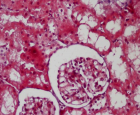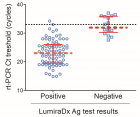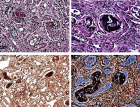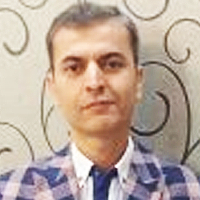Abstract
Review Article
Advancing Forensic Approaches to Human Trafficking: The Role of Dental Identification
Aiswarya GR*
Published: 04 April, 2025 | Volume 9 - Issue 1 | Pages: 025-028
Background: Human trafficking is a significant global issue that affects millions of individuals, where victim identification remains a major challenge. Traditional methods such as DNA or fingerprint analysis are not always viable, necessitating alternative forensic approaches.
Methods: This article reviews the role of dental identification in human trafficking cases through an extensive analysis of existing literature. The study incorporates forensic odontology techniques, including dental charting, radiographic analysis, bite mark analysis, age estimation, and emerging technologies like Artificial Intelligence (AI).
Results: Findings indicate that dental identification methods are essential for victim identification, especially when conventional methods prove ineffective. AI integration enhances the accuracy and efficiency of dental forensic investigations, addressing challenges such as record access and cross-border complexities.
Conclusion: Dental identification, augmented by AI advancements, is an indispensable tool in forensic investigations related to human trafficking. The study underscores the necessity of international collaboration and technological innovation to enhance forensic practices.
Read Full Article HTML DOI: 10.29328/journal.jfsr.1001076 Cite this Article Read Full Article PDF
Keywords:
Human trafficking; Dental identification; Victim identification; Artificial intelligence; Modern slavery; Forensic dentistry
References
- The Global Slavery Index 2018 [Internet]. Available from: https://reliefweb.int/report/world/global-slavery-index-2018
- Identifying Victims of Human Trafficking: Inherent Challenges and Promising Strategies from the Field [Internet]. Available from: https://aspe.hhs.gov/reports/identifying-victims-human-trafficking-inherent-challenges-promising-strategies-field-0
- Pretty IA, Sweet D. A look at forensic dentistry--Part 1: The role of teeth in the determination of human identity. Br Dent J. 2001;190(7):359-66. Available from: https://doi.org/10.1038/sj.bdj.4800972
- Dovydaitis T. Human trafficking: the role of the health care provider. J Midwifery Womens Health. 2010;55(5):462-7. Available from: https://doi.org/10.1016/j.jmwh.2009.12.017
- Lukacs JR. Sex differences in dental caries experience: clinical evidence, complex etiology. Clin Oral Investig. 2011;15(5):649-56. Available from: https://doi.org/10.1007/s00784-010-0445-3
- Waleed P, Baba F, Alsulami S, Tarakji B. Importance of dental records in forensic dental identification. Acta Inform Med. 2015;23(1):49-52. Available from: https://doi.org/10.5455/aim.2015.23.49-52
- Manigandan T, Sumathy C, Elumalai M, Sathasivasubramanian S, Kannan A. Forensic radiology in dentistry. J Pharm Bioallied Sci. 2015;7(Suppl 1):S260-4. Available from: https://doi.org/10.4103/0975-7406.155944
- Ou X, Chen X, Xu X, Xie L, Chen X, Hong Z, et al. Recent Development in X-Ray Imaging Technology: Future and Challenges. Research (Wash D C). 2021;2021:9892152. Available from: https://doi.org/10.34133/2021/9892152
- Senn DR, Stimson PG, editors. Forensic Dentistry. 2nd ed. CRC Press; 2010. Available from: https://doi.org/10.4324/9780429292767
- Verma AK, Kumar S, Bhattacharya S. Identification of a person with the help of bite mark analysis. J Oral Biol Craniofac Res. 2013;3(2):88-91. Available from: https://doi.org/10.1016/j.jobcr.2013.05.002
- Pallam NK, Boaz K, Natrajan S, Raj M, Manaktala N, Lewis AJ. Computer-based method of bite mark analysis: A benchmark in forensic dentistry? J Forensic Dent Sci. 2016;8(1):32-9. Available from: https://doi.org/10.4103/0975-1475.176944
- Demirjian A, Goldstein H, Tanner JM. A new system of dental age assessment. Hum Biol. 1973;45(2):211-27. Available from: https://pubmed.ncbi.nlm.nih.gov/4714564/
- Gustafson G. Age determination on teeth. J Am Dent Assoc. 1950;41(1):45-54. Available from: https://doi.org/10.14219/jada.archive.1950.0132
- Nayak S, Renjith G, Shenoy A, Sundharam S. Age estimation in forensic dentistry: A review. Int J Sci Res. 2014;3:333-8. Available from: https://www.researchgate.net/publication/276295455_Age_Estimation_in_Forensic_Dentistry-_A_Review
- Evans S, Jones C, Plassmann P. 3D imaging in forensic odontology. J Vis Commun Med. 2010;33(2):63-8. Available from: https://doi.org/10.3109/17453054.2010.481780
- Raneri D. Enhancing forensic investigation through the use of modern three-dimensional (3D) imaging technologies for crime scene reconstruction. Aust J Forensic Sci. 2018;50(1):1-11. Available from: http://dx.doi.org/10.1080/00450618.2018.1424245
- Reesu GV, Brown NL. Application of 3D imaging and selfies in forensic dental identification. J Forensic Leg Med. 2022;89:102354. Available from: https://doi.org/10.1016/j.jflm.2022.102354
- Khatoon H, Renuga S, Kulkarni M, Verghese R. Overcoming challenges faced by forensic odontologist: An attempt in creating antemortem data. J Punjab Acad Forensic Med Toxicol. 2022;22:121-4. Available from: http://dx.doi.org/10.5958/0974-083X.2022.00066.8
- Downs JCU, Barsley RE. Ethical issues in forensic science & forensic odontology. In: Elsevier eBooks [Internet]. 2018;241–73. Available from: https://doi.org/10.1016/b978-0-12-805198-6.00013-x
- Identification of human trafficking victims in dental care settings [Internet]. Available from: https://www.researchgate.net/publication/259448825_Identification_of_human_trafficking_victims_in_dental_care_settings
- Mundorff A. Integrating forensic anthropology into disaster victim identification. Forensic Sci Med Pathol. 2011;8(2):131-9. Available from: https://doi.org/10.1007/s12024-011-9275-0
- Singh N, Gowhar O, Ain T, Sultan S. Exploring trends in forensic odontology. J Clin Diagn Res. 2014;8(1):ZC28-30. Available from: https://pmc.ncbi.nlm.nih.gov/articles/PMC4316332/
Figures:
Similar Articles
-
Advancing Forensic Approaches to Human Trafficking: The Role of Dental IdentificationAiswarya GR*. Advancing Forensic Approaches to Human Trafficking: The Role of Dental Identification. . 2025 doi: 10.29328/journal.jfsr.1001076; 9: 025-028
Recently Viewed
-
Cystoid Macular Oedema Secondary to Bimatoprost in a Patient with Primary Open Angle GlaucomaKonstantinos Kyratzoglou*,Katie Morton. Cystoid Macular Oedema Secondary to Bimatoprost in a Patient with Primary Open Angle Glaucoma. Int J Clin Exp Ophthalmol. 2025: doi: 10.29328/journal.ijceo.1001059; 9: 001-003
-
Metastatic Brain Melanoma: A Rare Case with Review of LiteratureNeha Singh,Gaurav Raj,Akshay Kumar,Deepak Kumar Singh,Shivansh Dixit,Kaustubh Gupta*. Metastatic Brain Melanoma: A Rare Case with Review of Literature. J Radiol Oncol. 2025: doi: ; 9: 050-053
-
Depression as a civilization-deformed adaptation and defence mechanismBohdan Wasilewski*,Olha Yourtsenyuk,Eugene Egan. Depression as a civilization-deformed adaptation and defence mechanism. Insights Depress Anxiety. 2020: doi: 10.29328/journal.ida.1001013; 4: 008-011
-
Drinking-water Quality Assessment in Selective Schools from the Mount LebanonWalaa Diab, Mona Farhat, Marwa Rammal, Chaden Moussa Haidar*, Ali Yaacoub, Alaa Hamzeh. Drinking-water Quality Assessment in Selective Schools from the Mount Lebanon. Ann Civil Environ Eng. 2024: doi: 10.29328/journal.acee.1001061; 8: 018-024
-
Rapid Microbial Growth in Reusable Drinking Water BottlesQishan Liu*,Hongjun Liu. Rapid Microbial Growth in Reusable Drinking Water Bottles. Ann Civil Environ Eng. 2017: doi: 10.29328/journal.acee.1001007; 1: 055-062
Most Viewed
-
Evaluation of Biostimulants Based on Recovered Protein Hydrolysates from Animal By-products as Plant Growth EnhancersH Pérez-Aguilar*, M Lacruz-Asaro, F Arán-Ais. Evaluation of Biostimulants Based on Recovered Protein Hydrolysates from Animal By-products as Plant Growth Enhancers. J Plant Sci Phytopathol. 2023 doi: 10.29328/journal.jpsp.1001104; 7: 042-047
-
Sinonasal Myxoma Extending into the Orbit in a 4-Year Old: A Case PresentationJulian A Purrinos*, Ramzi Younis. Sinonasal Myxoma Extending into the Orbit in a 4-Year Old: A Case Presentation. Arch Case Rep. 2024 doi: 10.29328/journal.acr.1001099; 8: 075-077
-
Feasibility study of magnetic sensing for detecting single-neuron action potentialsDenis Tonini,Kai Wu,Renata Saha,Jian-Ping Wang*. Feasibility study of magnetic sensing for detecting single-neuron action potentials. Ann Biomed Sci Eng. 2022 doi: 10.29328/journal.abse.1001018; 6: 019-029
-
Pediatric Dysgerminoma: Unveiling a Rare Ovarian TumorFaten Limaiem*, Khalil Saffar, Ahmed Halouani. Pediatric Dysgerminoma: Unveiling a Rare Ovarian Tumor. Arch Case Rep. 2024 doi: 10.29328/journal.acr.1001087; 8: 010-013
-
Physical activity can change the physiological and psychological circumstances during COVID-19 pandemic: A narrative reviewKhashayar Maroufi*. Physical activity can change the physiological and psychological circumstances during COVID-19 pandemic: A narrative review. J Sports Med Ther. 2021 doi: 10.29328/journal.jsmt.1001051; 6: 001-007

HSPI: We're glad you're here. Please click "create a new Query" if you are a new visitor to our website and need further information from us.
If you are already a member of our network and need to keep track of any developments regarding a question you have already submitted, click "take me to my Query."



















































































































































